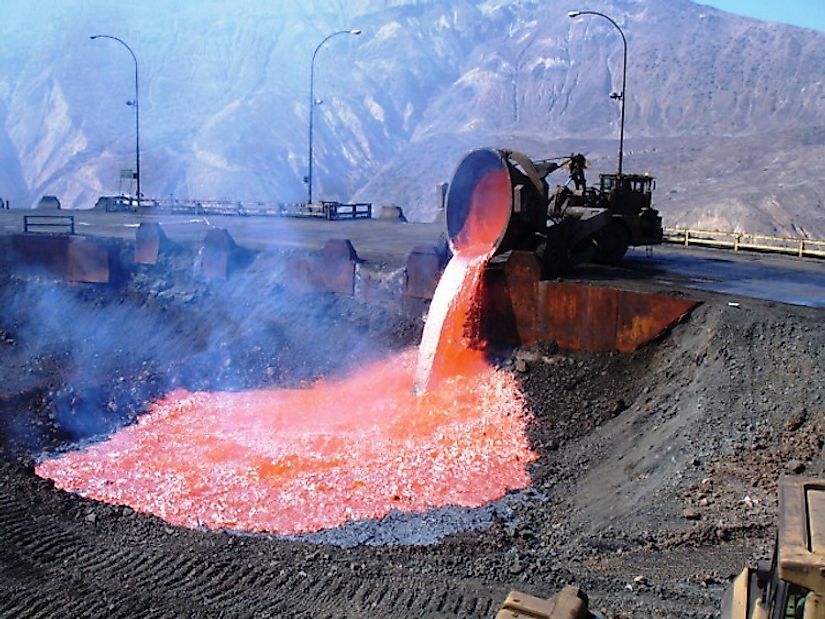Export Economies Driven By Mineral Ores And Metals

Most minerals come in their natural forms and thus are processed before they can be used. Iron is one of the elements that are in abundant and forms about 5% of the earth’s crust. It is the second most widely spread element after aluminum and the fourth most abundant natural element on earth. Iron is one of the most valuable minerals in the daily life of the modern man. Its use dates back to 3000 years ago, but its prominence was widespread in the 14th century when smelting furnace was invented. Countries endowed with minerals like iron, copper, and aluminum have benefitted greatly from the export of mineral ore and metals because of the ever increasing demands worldwide. Some of these economies are driven by such export where the share of mineral ore and metal is larger than other export merchandise. These countries include;
Chile
The mining sector is the leading economic activity in Chile contributing to 22% of the country’s GDP and 65% of the total export. Chilean minerals include copper, iron, gold, silver, coal, and molybdenum. Chile is the leading copper producer in the world with some of the biggest mining pits located in Gachapoal and El Loa provinces. The country also accounts for 28% of the world molybdenum production, 5th world producer of boron, 13th world producer of gold and 4.7% of the global metal reserves. Chile’s mineral ores and metals export account for 54% of the total export. Chile exports its mineral ore and metal mainly to European Union markets, China, Japan, and Macedonia.
Peru
Peru is one of the leading exporters of gold, zinc, copper, silver, and steel. Other minerals include molybdenum, tin, and lead. The country is the third-largest copper producer, fifth in gold, fourth in lead, and first in silver among other minerals. Mining and metal production are done through private firms. Minerals account for 17% of the country’s GDP. The country exports its minerals ores and metal mainly to China where the demand especially for copper and iron ore are very high. Other export destinations include Asian countries and Switzerland. Mineral ore and metal export in Peru account for 48.7% of the total merchandise export.
Armenia
Mineral ore and metal are Armenia’s major export merchandise accounting for 44.4% of country’s export goods. The country’s major mineral exports include copper and molybdenum. Other minerals include gold, silver, lead,and zinc. The country has more than 30 base metal and precious metal mines. Minerals Ores and metals account for 5% of the country’s GDP. The country’s leading mineral exports include diamond cut, copper, and molybdenum ores. Steel is mainly exported in scrap form since the country has no steel industry. Armenia exports most of its mineral ores and metal to China and other Asian countries where the demand is high especially for copper ores. Diamond cuts are mainly exported to the European Union.
Conclusion
Other countries with the largest share of mineral ore and metal in the export merchandise include Iceland, Mozambique, Australia, and Bolivia. More than 25% of these countries’ export merchandise is minerals ores and metals. Common minerals exported include copper, iron, gold and molybdenum.
Export Economies Driven By Mineral Ores And Metals
| Rank | Country | Mineral Ore and Metal Exports Relative to Total Merchandise Exports |
|---|---|---|
| 1 | Chile | 54.0% |
| 2 | Peru | 48.7% |
| 3 | Armenia | 44.4% |
| 4 | Iceland | 40.2% |
| 5 | Mozambique | 38.5% |
| 6 | Australia | 31.4% |
| 7 | Bolivia | 25.9% |
| 8 | Zimbabwe | 24.4% |
| 9 | South Africa | 24.0% |
| 10 | Togo | 17.9% |







